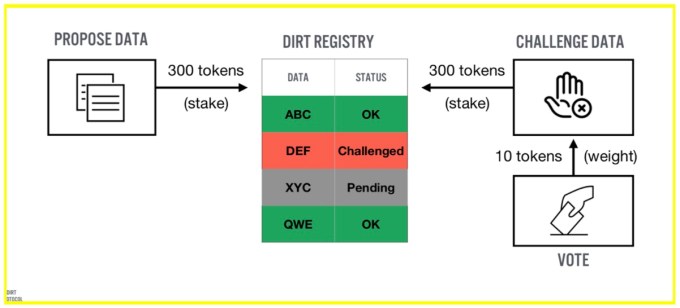DC Circuit Court Judge Brett Kavanaugh has been nominated for the position of Supreme Court Justice, and on this occasion I think it warranted that we revisit in detail the sound intellectual thrashing this man suffered at the hands of his colleagues just last year on the topic of the internet and net neutrality. Because Kavanaugh was very, very wrong then and gives every indication that he will take his ignorance unapologetically to the highest court in the land.
To set the scene: In 2015 the United States Telecom Association sued the FCC, alleging the Open Internet Order that passed earlier that year, establishing net neutrality as we know it — or rather, knew it — was illegal.
This highly watched case was heard late in 2015 and the decision was issued six months later, in June of 2016. DC Circuit Judges Srinivasan, Tatel and Williams ruled against the telecoms, essentially finding that the FCC was well within its jurisdiction in establishing net neutrality rules to begin with, and also that the rule as written was lawful.
Unsatisfied with this ruling, the USTA petitioned to have the case reheard “en banc,” meaning with all active circuit judges present. This petition was denied, primarily because the Open Internet Order was by that point in peril of replacement, and new deliberations would as likely as not soon be rendered moot.
But two judges had dissenting opinions to bruit, and so the court published them alongside the denial — though unfortunately for them Srinivasan used the same opportunity to demolish their arguments. It would have been better for them, in retrospect, if they had remained silent, rather than raising their profound ignorance like a dirty flag to be mocked and pointed at forever — as we do here today.
I covered this disaster in less detail then, because it was only one case and news story among many having to do with net neutrality, and having no official consequences (the motion, after all, was denied) it was only worth touching on in brief. But now, with Kavanaugh ascendant, I feel it is important to resurface his late folly as evidence of his unsuitability for the position to which he has been nominated. His dissent deeply misinterprets multiple Supreme Court decisions, demonstrates a profound lack of understanding about how the industry works and produces absurd results if taken to its logical conclusions.
I’ll present Kavanaugh’s arguments in good faith, since they were offered that way, and then summarize their point-by-point demolishment by Srinivasan, the FCC or common sense.
Wrong on jurisdiction
Kavanaugh’s first argument is that the FCC’s rule is illegal to begin with because it does not have authority to issue it. He cites what he calls the “major rules” doctrine, which is that an agency like the FCC requires clear and explicit permission from Congress to issue “decisions of ‘vast economic and political significance.’ ”
This makes perfect sense — there have to be limits so serious questions of policy aren’t defined by a small group of commissioners. He writes:
If an agency wants to exercise expansive regulatory authority over some major social or economic activity–regulating cigarettes, banning physician-assisted suicide, eliminating telecommunications rate-filing requirements, or regulating greenhouse gas emitters, for example–an ambiguous grant of statutory authority is not enough. Congress must clearly authorize an agency to take such a major regulatory action.
Congress has never enacted net neutrality legislation or clearly authorized the FCC to impose common-carrier obligations on Internet service providers.
As this is primarily a question of authority and precedent and not technology, I won’t go too into detail here. If you’re curious, this article goes into the various court and agency decisions that led to the 2015 rules.
In brief, however, the question comes down to whether Congress has authorized the FCC to make a decision like that made in the 2015 rules: to classify broadband providers as common carriers and exert its powerful Title II authority over them. Srinivasan explains that it most certainly is:
We have no need in this case to resolve the existence or precise contours of the major rules (or major questions) doctrine described by our colleagues. Assuming the existence of the doctrine as they have expounded it, and assuming further that the rule in this case qualifies as a major one so as to bring the doctrine into play, the question posed by the doctrine is whether the FCC has clear congressional authorization to issue the rule. The answer is yes. Indeed, we know Congress vested the agency with authority to impose obligations like the ones instituted by the Order because the Supreme Court has specifically told us so.
And it told us so in a 2005 decision known as Brand X — which Kavanaugh himself cites. In Brand X it was decided that the FCC could in fact define DSL as telecommunications but cable internet as an information service (again, the piece above has more context for these terms).
Kavanaugh argues that Brand X shows that the 1996 Telecommunications Act, from which the FCC derives its authority, is ambiguous in its definition of internet services. This ambiguity, he says, means there is no specific mandate from Congress to create a major rule such as net neutrality.
“That analysis,” Srinivasan explains in his enjoyable prose, “rests on a false equivalence: it incorrectly equates two distinct species of ambiguity.”
“Whereas Brand X found statutory ambiguity on whether ISPs are telecommunications providers, the decision found no statutory ambiguity on whether the FCC gets to answer that question,” he writes (emphasis mine). And once the Supreme Court decides something is legal, he concludes, “our inquiry is over.” Ouch.
It’s important to note here that Brand X isn’t some obscure case — it’s extremely influential and well-studied. Kavanaugh’s interpretation of it is exceptional in its backwardness, attempting to wring the complete opposite conclusion from what has been accepted for more than a decade. This kind of poor reasoning isn’t the kind you expect to find in a Supreme Court Justice.
Wrong on tech and wrong on free speech
But the question of jurisdiction is only prefatory to the main event, in which Kavanaugh truly embarrasses himself.
“Imposing common-carrier regulations on Internet service providers violates the First Amendment,” he writes. And to be clear, he’s talking about the First Amendment rights of the internet service providers. He cites the Supreme Court again, this time two cases from the ’90s involving Turner Broadcasting.
Some readers may already be exhibiting signs of skepticism. Turner Broadcasting? In the ’90s? Wasn’t that a completely different era and industry? It was, but Supreme Court decisions can be surprisingly broad and durable; precedents may stand for decades, if not centuries. So let’s hear Kavanaugh out, shall we?
The cases, he explained, had to do with Turner Broadcasting challenging “must-carry” rules that required cable operators to carry certain programming — local stations, for instance. Turner argued that the government requiring it to broadcast certain information infringed on its right to free speech. And indeed, although the court ultimately decided that the must-carry rules should be enforced, it was also acknowledged that Turner does indeed exert free speech rights when it decides what content to broadcast or not broadcast.
“The First Amendment’s basic principles ‘do not vary when a new and different medium for communication appears,’ ” he writes, “Although there of course can be some differences in how the ultimate First Amendment analysis plays out depending on the nature of (and competition in) a particular communications market.”
Starting from this solid ground, Kavanaugh immediately drifts into the hard vacuum of ignorance. Please remember that the following was written by someone nominated to be a Justice of the Supreme Court. I really can’t condense it because every sentence has, as Srinivasan might put it, a distinct species of ignorance (emphasis mine).
Here, of course, we deal with Internet service providers, not cable television operators. But Internet service providers and cable operators perform the same kinds of functions in their respective networks. Just like cable operators, Internet service providers deliver content to consumers. Internet service providers may not necessarily generate much content of their own, but they may decide what content they will transmit, just as cable operators decide what content they will transmit. Deciding whether and how to transmit ESPN and deciding whether and how to transmit ESPN.com are not meaningfully different for First Amendment purposes.
Indeed, some of the same entities that provide cable television service – colloquially known as cable companies – provide Internet access over the very same wires. If those entities receive First Amendment protection when they transmit television stations and networks, they likewise receive First Amendment protection when they transmit Internet content. It would be entirely illogical to conclude otherwise.
Setting aside the unprofessional and unjustified bravado that concludes this breathtaking little salvo, it really would take hours and thousands of words to explain satisfactorily, to Kavanaugh himself, all the different ways he is incorrect. I’ll attempt to satisfy the demands of posterity and brevity in summarizing them.
1. Packet-based internet service is fundamentally different from cable broadcasting, even if the latter has converted to packet-based transmission over the last decade. What they have in common is that they are transmitted as electrical impulses, sometimes over wires. It’s akin to the level of similarity between a telephone call (mostly also packet-based now) and a cable television signal.
2. The idea that because things are transmitted via the same medium, they are legally identical, is so mystifyingly naive and backwards that I’m surprised to see it in a legal document of any kind, let alone a judge’s official dissent in a major case. Just as a basic counter-example, what about radio waves? They are used in countless different capacities by countless different devices, many of which are differently regulated, subject to different laws, possessed of different capabilities and so on. What about DSL? It runs over telephone lines; should it be regulated like phone calls?
3. Outside some very basic and well-understood limits, internet service providers do not decide what content to deliver to users. And in many cases, thanks to encryption, they are totally unable to track (and therefore unable to control) what data they are providing. If all the traffic on the internet was encrypted and ISPs only transmitted data that was totally unintelligible to them, they would still be able to advertise and provide the exact same, highly valuable service to their users.
Kavanaugh does touch on, and dismiss, some of this as follows:
[T]he FCC argues (and the panel agreed) that Turner Broadcasting does not apply in this case because many Internet service providers do not actually exercise editorial discretion to favor some content over others… I find that argument mystifying.
It may be true that some, many, or even most Internet service providers have chosen not to exercise much editorial discretion, and instead have decided to allow most or all Internet content to be transmitted on an equal basis. But that “carry all comers” decision itself is an exercise of editorial discretion. Moreover, the fact that the Internet service providers have not been aggressively exercising their editorial discretion does not mean that they have no right to exercise their editorial discretion.
We have already established, of course, that ISPs not only do not decide what content to transmit, but that in many (approaching all) circumstances, it cannot do so. But beyond this elementary oversight, Kavanaugh has also failed to comprehend, or perhaps even to read, the rule he is railing against.
Because his exact argument is preemptively dealt with in the text of the rule itself, which in the first place defines entities affected by the rules as advertising and providing “the capability to transmit data to and receive data from all or substantially all Internet endpoints” — a definition that precludes editorial control. And if that’s too ambiguous for Kavanaugh, several paragraphs are dedicated to addressing his concerns in detail. Some excerpts:
As a factual matter, broadband Internet access services are nothing like the cable service at issue in Turner I.
Cable operators… both engage in and transmit speech with the intent to convey a message either through their own programming directly or through contracting with other programmers for placement in a cable package.
Broadband providers, however, display no such intent to convey a message in their provision of broadband Internet access services—they do not engage in speech themselves but serve as a conduit for the speech of others.
There’s more (paragraphs 544 to 549 or so) in the Open Internet Order if anyone (for instance, Judge Kavanaugh) is curious. And in case you are worried that these definitions and assertions have been found wanting by others or challenged by the parties affected, allow Srinivasan to set your mind at ease:
An ISP has no First Amendment right to engage in those kinds of practices [i.e. editorial content control]. No Supreme Court decision suggests otherwise. Indeed, although the two dissenting FCC Commissioners objected to the agency’s adoption of the rule on multiple grounds, neither suggested the rule poses any First Amendment issue. Similarly, the principal parties challenging the Order in this court, who collectively represent virtually every broadband provider—including all of the major ISPs—bring no First Amendment challenge to the rule.
Considering especially the length and thoroughness with which now-Chairman Ajit Pai excoriated the original rule, it may be expected that if there were free speech considerations, he would have brought them up. Likewise the many ISPs and trade organizations, which would have loved to have something like Constitutional grounds to challenge the order.
The only ones who bring up the issue are Kavanaugh and a tiny ISP in Texas called Alamo, which wanted to offer a “family-friendly” edited subset of the internet to its customers.
Funnily enough, this is permitted! And by publicly stating that it has no intention of providing access to “substantially all Internet endpoints,” Alamo would exempt itself from the net neutrality rules! Yes, you read that correctly — an ISP can opt out of the rules by changing its business model. They are, to Kavanaugh’s evident bafflement, essentially voluntary. But here’s Srinivasan again enlightening his colleague:
There is no need in this case to scrutinize the exact manner in which a broadband provider could render the FCC’s Order inapplicable by advertising to consumers that it offers an edited service rather than an unfiltered pathway. No party disputes that an ISP could do so if it wished, and no ISP has suggested an interest in doing so in this court.
In the event that an ISP nonetheless were to choose to hold itself out to consumers as offering them an edited service rather than indiscriminate internet access—despite the potential effect on its subscriber base—it could then bring itself outside the rule. In that sense, the rule could be characterized as “voluntary,” [as Kavanaugh describes it], but in much the same way that just about any regulation could be considered voluntary, insofar as a regulated entity could always transform its business to such an extent that it is no longer in the line of business covered by the regulation.
Wrong on the slippery slope
Lastly, not content to be wrong on several Supreme Court cases, the technical basis for the industry he is writing about or the rule itself he is suggesting is unconstitutional, Kavanaugh felt the need to offer, as a rancid cherry on top, a dose of FUD suggesting that if this rule (which as he sees it permits government tampering with free speech without evidence of monopoly) were lawful, the government could move on to regulating the speech of edge providers from Google and Facebook to this website:
If market power need not be shown, the Government could regulate the editorial decisions of Facebook and Google, of MSNBC and Fox, of NYTimes.com and WSJ.com, of YouTube and Twitter. Can the Government really force Facebook and Google and all of those other entities to operate as common carriers? Can the Government really impose forced-carriage or equal-access obligations on YouTube and Twitter? If the Government’s theory in this case were accepted, then the answers would be yes. After all, if the Government could force Internet service providers to carry unwanted content even absent a showing of market power, then it could do the same to all those other entities as well.
The vast and numerous differences between a broadband internet provider and a service like Facebook, let alone a press outlet like The New York Times, are perhaps unsurprisingly lost on Kavanaugh. Once more Srinivasan explains it concisely:
Those companies evidently do not share our colleague’s concern—all but one is a member of a group that supports the rule in this court.
That may be in part because those companies, in contrast with broadband ISPs, are not considered common carriers that hold themselves out as affording neutral, indiscriminate access to their platform without any editorial filtering.
The real slippery-slope concerns run in the reverse direction. Under our dissenting colleague’s approach, broadband ISPs would have a First Amendment entitlement to block and throttle content based on their own commercial preferences even if they had led customers to anticipate neutral and indiscriminate access to all internet content.
That’s the last thing on the long list of things about which Kavanaugh needed to be schooled in order to issue even a reasonably incorrect opinion on this subject.
This has been a rather long exposition, but I thought it was important that everyone see, in Kavanaugh’s own words, exactly how poor of a study he is, at least as far as this issue is concerned, and how little he seems to think through both his own arguments and those of others.
As Srinivasan notes, what Kavanaugh essentially suggests is that, against the explicit findings of several Supreme Court decisions, the regulators, and the regulated industry, internet providers should be granted free speech rights that allow them to arbitrarily limit the free speech of their users.
Is this the type of twisted logic, inadequate research and shallow understanding that we want in a Supreme Court Justice? I think not. Kavanaugh’s brash and embarrassing failure on this case alone is in my opinion generates sufficient doubt regarding his competence that his nomination should be denied.









 Owen (@ow)
Owen (@ow)  Keese (@JKeester)
Keese (@JKeester) 


